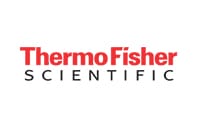The age of sequencing is undoubtedly upon us. From improving cancer diagnostics to pinning down elephant poaching hotspots, DNA sequencing is revolutionizing the world around us from the ground up. The latest video from Thermo Fisher Scientific’s “Behind the Bench” blog, 10 moments in DNA sequencing gives fascinating insights into the amazing advances being made with Next Generation DNA Sequencing and Sanger sequencing by capillary electrophoresis.

What is DNA Sequencing?
All living things contain a map for the development and function of the organism encoded within their DNA, also known as their genome. In the 1970s, Frederick Sanger, developed Sanger Sequencing. Although the introduction of Sanger sequencing was revolutionary for science at the time, and won Sanger his second Nobel Prize, the length of genetic material that could be decoded limited the technique. Sequencing entire genomes was incredibly time-consuming and prohibitively expensive. By reading sequences of multiple DNA fragments and even multiple samples at the same time, Next Generation Sequencing can deduce the sequence of a genome at a much faster rate and lower cost.
However, both Sanger sequencing and Next Generation Sequencing have their place in molecular biology! When you only need to know the sequence of a short fragment or to simply identify particular marks within the genome (such as microsatellites, which are sensitive enough to be used for paternity analysis), Sanger sequencing is more applicable. Next generation sequencing is best for examining hundreds of genes at a time or sequencing samples with a low amount of starting material.
More than alphabet soup – beyond ACGT
Due to its power to provide comprehensive information on the genetic sequence of organisms, sequencing has been used for many amazing applications—and could even be used for your next series of experiments.
Tackling Human Disease
DNA Sequencing technology can help decode the complexities of human disease. The MicrobeBridge™ reference database allows the CDC to use sequencing technology to quickly identify microbes and help stem outbreaks and epidemics. When the Ebola outbreak threatened West Africa, Next Generation Sequencing technology enabled researchers to track the evolution of the Ebola virus in real time.
Cancer, which is a multitude of different diseases with many characteristics, is the focus of a recent effort from the National Cancer Institute (NCI). Up to 1000 patients will have their tumors sequenced for genetic mutations that can be exploited by targeted therapeutics. Thus, patients could benefit from personalized genomic treatment options, tailored to their tumors.
Uncovering the secrets of our past
Next generation sequencing allows what was previously technically impossible. DNA derived from human specimens thousands of years old can now be sequenced to unveil insights into our evolutionary past. One recent study gives insights into how the Americas may have become populated. Over 16,000 years ago, a land bridge connected Siberia to Alaska, allowing migration of the first people from Asia to the Americas. There are many theories as to how people populated the North and South of America. However, recent next generation sequencing data has suggested an interesting model. In an ancient burial site in Alaska, two preserved infants were found and their mitochondrial genome (the genetic sequence of the energy-producing organelle found in every cell in the body and is maternally inherited) was sequenced. Interestingly, the mitochondrial DNA from the two infants was very different from that of modern people living in North America—and was more closely similar to mitochondrial DNA from a 500 year-old Incan child mummy found in Argentina. This has huge implications as to how humans populated the Americas, suggesting that the people who first arrived in Alaska from Asia were already very diverse and that they traversed all the way down the American continent to South America.
Validating (or not!) herbal supplements
Many people are turning to herbal supplements, seeking a more natural way to stay healthy. This has led to the dietary supplement market ballooning to an estimated worth of over $123 billion dollars worldwide. Although widely consumed, data from next generation sequencing has questioned whether some herbal supplements actually contained the ingredients on the label. Researchers at the University of Guelph in Ontario, Canada used DNA barcoding to sequence the contents of 44 herbal supplements. Their results were horrifying: a third of the samples did not even contain the advertised plant, with many containing ingredients not listed on the bottle. Some even contained other supplements that were instead powerful laxatives or were mixed with substances that can induce an allergic reaction in many people, such as nuts. Only two of the products tested contained 100% authentic ingredients. Luckily, largely due to the results of this sequencing study, legislators are starting to investigate the accuracy of the labeling of supplements in a bid to protect the public from products that, theoretically, should be improving their health!
Learning about the science behind ancient medicine
According to the National Center for Complimentary and Integrative Health, 38% of all Americans use some form complementary medicine to help allay their ills. The use of alternative medicine receives a large amount of scepticism; however, researchers are using sequencing technologies to better understand how alternative medicine may influence our bodies. Ayurvedic medicine is based on a whole-body holistic approach. One form of Ayurveda, called Prakriti, focuses on the interplay between lifestyle and environment and how this may influence disease. Interestingly, an analysis of genetic markers (single nucleotide polymorphisms or SNPs) was able to accurately categorize a population of Indian males into the three groups used in Prakriti. For example, one group classified as Pitta, could correlate with the mutational profile of the gene, PGM1, which is at the center of many metabolic pathways. This suggests that the ancient practice of Ayurveda may have a genetic basis and scientifically validates this ancient medicine.
Conserving our wildlife
Sequencing is also aiding conservation efforts around the world. For example, Thermo Fisher Scientific recently donated a Genetic Analyzer to the Cheetah Conservation Fund (CCF), Life Technologies Conservation Genetics Laboratory: the only fully equipped genetics lab at a conservation facility in Africa. Due to human-wildlife conflict, the cheetah population has declined by 90% in the 20th century alone, and the International Union for the Conservation of Nature (IUCN) lists them as “vulnerable.” Sequencing enables the researchers at CCF to better understand the underlying genetics of this beautiful big cat and monitor the reproduction and health of the cheetah population. This information is crucial to ensure that we do not lose the Cheetah forever.
Every year, poachers kill 10% of the African elephant population, and many of the elephants are hunted for their ivory tusks. Researchers are using sequencing technology to track where elephants are being poached. By sequencing the genomes of tusks seized by law enforcement, they found that 27 out of 28 seizures occurred in one of four areas and most seizures were concentrated in just two regions. This work showed the location of the poaching “hotspots” and may allow enforcement officials to concentrate their efforts in those locations. Thus, sequencing technology is helping to protect our elephants from poachers and stem the illegal trade of ivory worldwide.
Even in the past three decades, DNA sequencing has gone from a very expensive and time-consuming process (the human genome project cost over $3 billion and took over a decade to complete at the turn of the century) to a relatively inexpensive and fast technique (Next Generation Sequencing can sequence an entire genome for much less and in hours, not years). These advances have opened up new avenues for research that were previously thought impossible—like analyzing the genome of a single cell. Whether it is helping tackle human diseases, unveiling the secrets of our past, or bringing together ancient medicine with modern science, DNA sequencing has yielded some amazing discoveries, with even more in store in the coming years! Visit Behind the Bench to learn more about the science behind awe-inspiring DNA sequencing breakthroughs or to get your own technical questions answered.






